-
 Bitcoin
Bitcoin $108,262.4325
-1.40% -
 Ethereum
Ethereum $2,518.2882
-2.94% -
 Tether USDt
Tether USDt $1.0003
-0.01% -
 XRP
XRP $2.2262
-1.71% -
 BNB
BNB $653.9254
-1.55% -
 Solana
Solana $148.1036
-3.11% -
 USDC
USDC $1.0000
0.01% -
 TRON
TRON $0.2829
-1.45% -
 Dogecoin
Dogecoin $0.1639
-4.82% -
 Cardano
Cardano $0.5742
-4.43% -
 Hyperliquid
Hyperliquid $38.9506
-3.95% -
 Sui
Sui $2.9040
-4.34% -
 Bitcoin Cash
Bitcoin Cash $484.8307
-2.62% -
 Chainlink
Chainlink $13.1971
-3.73% -
 UNUS SED LEO
UNUS SED LEO $9.0822
0.51% -
 Avalanche
Avalanche $17.8613
-4.01% -
 Stellar
Stellar $0.2385
-2.26% -
 Toncoin
Toncoin $2.7570
-3.88% -
 Shiba Inu
Shiba Inu $0.0...01145
-3.99% -
 Litecoin
Litecoin $86.9999
-2.43% -
 Hedera
Hedera $0.1538
-3.90% -
 Monero
Monero $313.7554
-2.03% -
 Polkadot
Polkadot $3.3681
-5.08% -
 Dai
Dai $1.0000
0.00% -
 Ethena USDe
Ethena USDe $1.0001
-0.01% -
 Bitget Token
Bitget Token $4.4401
-2.97% -
 Uniswap
Uniswap $6.9644
-8.41% -
 Pepe
Pepe $0.0...09666
-4.79% -
 Aave
Aave $266.5686
-5.04% -
 Pi
Pi $0.4713
-4.95%
How to trade Bitcoin on Binance? How to calculate the handling fee
Trading Bitcoin on Binance involves setting up an account, funding it, and using spot trading; fees can be reduced by holding BNB.
May 09, 2025 at 10:50 am
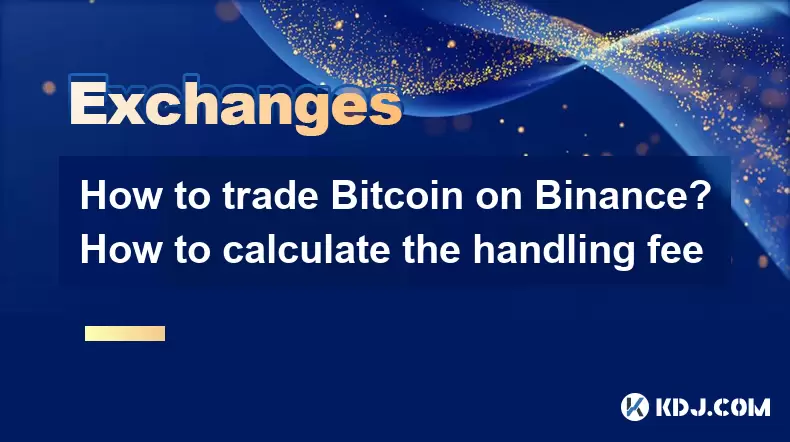
Trading Bitcoin on Binance is a popular activity for many cryptocurrency enthusiasts. Binance, one of the world's leading cryptocurrency exchanges, offers a user-friendly platform for buying, selling, and trading various cryptocurrencies, including Bitcoin. This article will guide you through the process of trading Bitcoin on Binance and explain how to calculate the handling fees associated with these transactions.
Setting Up Your Binance Account
Before you can start trading Bitcoin on Binance, you need to set up an account. Here's how you can do it:
- Visit the Binance website and click on the "Register" button.
- Enter your email address and create a strong password. Make sure to use a password that includes a mix of letters, numbers, and special characters to enhance security.
- Verify your email address by clicking on the confirmation link sent to your inbox.
- Complete the identity verification process if you plan to trade larger amounts. This involves submitting a government-issued ID and a selfie to comply with KYC (Know Your Customer) regulations.
Once your account is set up and verified, you can proceed to fund your account and start trading.
Funding Your Binance Account
To trade Bitcoin, you'll need to deposit funds into your Binance account. Here's how you can do it:
- Log in to your Binance account and navigate to the "Wallet" section.
- Select "Deposit" and choose the cryptocurrency you want to deposit, such as Bitcoin (BTC).
- Copy the deposit address provided by Binance and use it to send Bitcoin from your external wallet to your Binance wallet.
- Wait for the transaction to be confirmed on the blockchain. This may take a few minutes to an hour, depending on the network congestion.
Once your deposit is confirmed, the funds will be available in your Binance account, and you can start trading.
Trading Bitcoin on Binance
Binance offers various trading options, including spot trading, margin trading, and futures trading. For beginners, spot trading is the most straightforward method. Here's how to trade Bitcoin using spot trading:
- Navigate to the "Trade" section on the Binance website and select "Spot".
- Choose the Bitcoin trading pair you want to trade, such as BTC/USDT (Bitcoin against Tether).
- Enter the amount of Bitcoin you want to buy or sell in the order form.
- Select the order type: Market order for immediate execution at the current market price, or Limit order to set a specific price at which you want to buy or sell.
- Review your order and click "Buy BTC" or "Sell BTC" to execute the trade.
Once your order is filled, the Bitcoin will be credited to or debited from your spot wallet on Binance.
Calculating Handling Fees on Binance
When trading on Binance, you need to consider the handling fees, which include trading fees and withdrawal fees. Here's how to calculate them:
Trading Fees
Binance uses a maker-taker fee model for trading fees. The fees depend on your trading volume and whether you are a maker or a taker.
- Maker orders add liquidity to the order book and are charged a lower fee. The maker fee starts at 0.1% but can be reduced to as low as 0% if you hold Binance Coin (BNB) and have a high trading volume.
- Taker orders remove liquidity from the order book and are charged a higher fee. The taker fee starts at 0.1% but can also be reduced if you hold BNB and have a high trading volume.
To calculate your trading fee, multiply the total amount of your trade by the applicable fee percentage. For example, if you buy 1 BTC at a price of $30,000 with a 0.1% taker fee, the fee would be:
[ 1 \text{ BTC} \times \$30,000 \times 0.1\% = $30 ]
Withdrawal Fees
When you want to move your Bitcoin from Binance to an external wallet, you need to pay a withdrawal fee. The withdrawal fee for Bitcoin varies based on the network congestion and can be found on the Binance website under the "Withdraw" section for Bitcoin.
To calculate your withdrawal fee, simply use the current withdrawal fee listed on Binance. For example, if the withdrawal fee for Bitcoin is 0.0005 BTC, and you want to withdraw 1 BTC, the total amount you will receive in your external wallet would be:
[ 1 \text{ BTC} - 0.0005 \text{ BTC} = 0.9995 \text{ BTC} ]
Using BNB to Reduce Fees
Binance offers a significant advantage to users who hold Binance Coin (BNB). By using BNB to pay for trading fees, you can receive a 25% discount on your trading fees. Here's how to enable this feature:
- Navigate to the "User Center" on the Binance website.
- Select "Account" and then "Payment".
- Toggle the "Use BNB to pay for fees" option to enable it.
Once enabled, Binance will automatically deduct the trading fees from your BNB balance at a 25% discount. This can significantly reduce your overall trading costs over time.
Monitoring Your Trades and Portfolio
After you've started trading Bitcoin on Binance, it's important to monitor your trades and portfolio to make informed decisions. Here's how you can do it:
- Use the "Spot Wallet" section to view your current Bitcoin balance and other cryptocurrency holdings.
- Navigate to the "Trade History" to review your past trades and analyze your performance.
- Set up price alerts for Bitcoin to stay updated on market movements and make timely trading decisions.
- Use the "Portfolio" section to get an overview of your total asset value and performance over time.
By regularly monitoring your trades and portfolio, you can better manage your investments and optimize your trading strategy.
Frequently Asked Questions
Q1: Can I trade Bitcoin on Binance without completing identity verification?
A1: Yes, you can trade Bitcoin on Binance without completing identity verification, but there are limitations. Unverified accounts have lower withdrawal limits and may not be able to access certain features. To trade larger amounts and access all features, completing identity verification is recommended.
Q2: What is the difference between a market order and a limit order on Binance?
A2: A market order is executed immediately at the current market price, while a limit order allows you to set a specific price at which you want to buy or sell. Market orders provide instant execution but may result in slippage, whereas limit orders give you more control over the price but may not be filled if the market does not reach your specified price.
Q3: How can I reduce my trading fees on Binance?
A3: You can reduce your trading fees on Binance by holding Binance Coin (BNB) and using it to pay for fees, which gives you a 25% discount. Additionally, increasing your trading volume can move you to a lower fee tier, further reducing your fees.
Q4: Is it safe to leave my Bitcoin on Binance?
A4: Binance is considered a secure platform with robust security measures in place, including two-factor authentication and cold storage for the majority of user funds. However, it's always a good practice to move your Bitcoin to a personal wallet for long-term storage to minimize risks associated with exchange hacks or operational issues.
Disclaimer:info@kdj.com
The information provided is not trading advice. kdj.com does not assume any responsibility for any investments made based on the information provided in this article. Cryptocurrencies are highly volatile and it is highly recommended that you invest with caution after thorough research!
If you believe that the content used on this website infringes your copyright, please contact us immediately (info@kdj.com) and we will delete it promptly.
- Bitcoin's Pattern Break: Are HODLers the Key to the Next Surge?
- 2025-07-04 18:50:12
- Bitcoin Price, Trump's Bill, and the $150K Dream: A NYC Take
- 2025-07-04 19:50:12
- Ethereum, LILPEPE, and the July Bounce: Will Pepe Steal ETH's Thunder?
- 2025-07-04 19:10:12
- Binance Institutional Loans: Unlocking 4x Leverage and Zero Interest for Whales
- 2025-07-04 19:15:12
- Bitcoin Bull Run: Analysts Eye Peak in Late 2025?
- 2025-07-04 19:20:13
- Pepe Indicators, Bullish Forecast: Can the Meme Coin Rally?
- 2025-07-04 19:25:12
Related knowledge
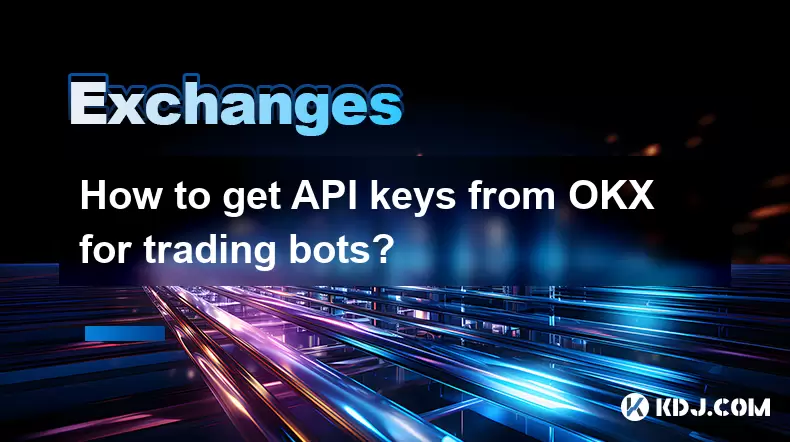
How to get API keys from OKX for trading bots?
Jul 03,2025 at 07:07am
Understanding API Keys on OKXTo interact with the OKX exchange programmatically, especially for building or running trading bots, you need to obtain an API key. An API (Application Programming Interface) key acts as a secure token that allows your bot to communicate with the exchange's servers. On OKX, these keys come with customizable permissions such ...
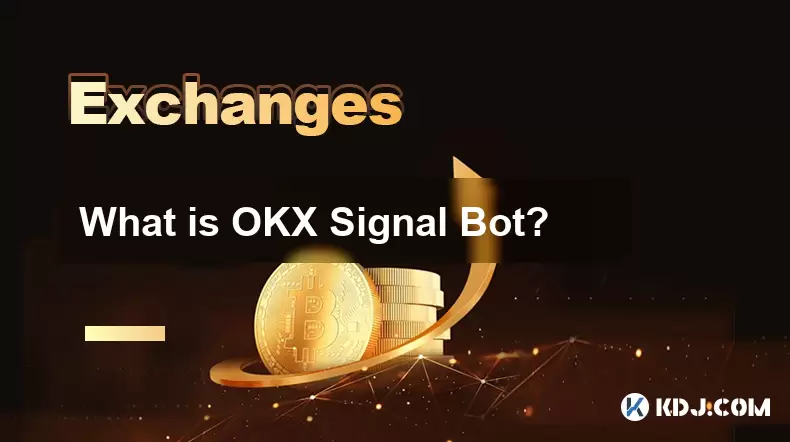
What is OKX Signal Bot?
Jul 02,2025 at 11:01pm
Understanding the Basics of OKX Signal BotThe OKX Signal Bot is a feature within the OKX ecosystem that provides users with automated trading signals and execution capabilities. Designed for both novice and experienced traders, this bot helps identify potential trading opportunities by analyzing market trends, technical indicators, and historical data. ...
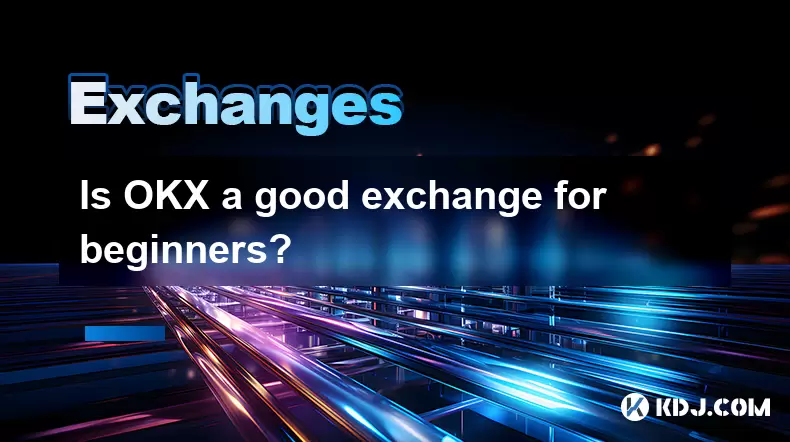
Is OKX a good exchange for beginners?
Jul 03,2025 at 05:00pm
What Is OKX and Why Is It Popular?OKX is one of the leading cryptocurrency exchanges globally, known for its robust trading infrastructure and a wide variety of digital assets available for trading. It supports over 300 cryptocurrencies, including major ones like Bitcoin (BTC), Ethereum (ETH), and Solana (SOL). The platform has gained popularity not onl...
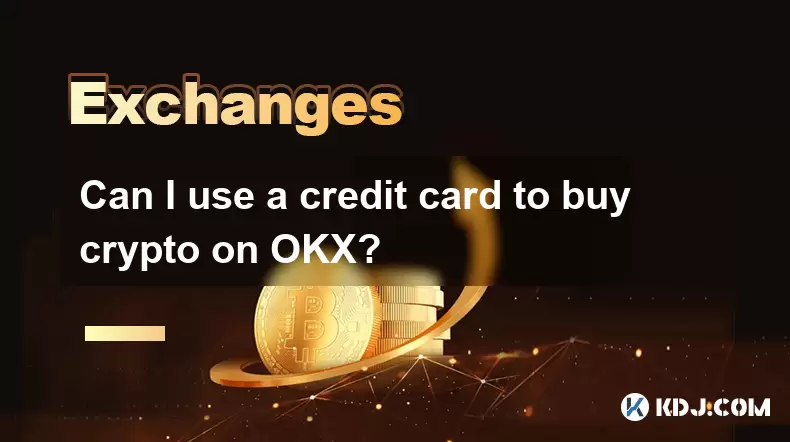
Can I use a credit card to buy crypto on OKX?
Jul 04,2025 at 04:28am
Understanding OKX and Credit Card PaymentsOKX is one of the leading cryptocurrency exchanges globally, offering a wide range of services including spot trading, derivatives, staking, and more. Users often wonder whether they can use a credit card to buy crypto on OKX, especially if they are new to the platform or looking for quick ways to enter the mark...
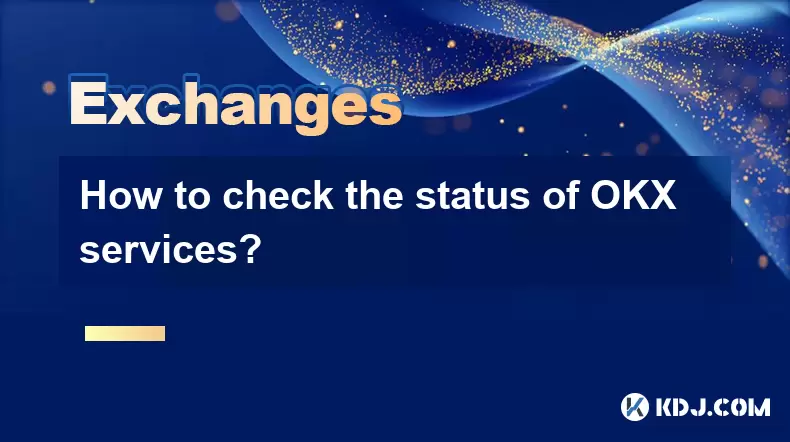
How to check the status of OKX services?
Jul 02,2025 at 11:14pm
What is OKX, and Why Checking Service Status Matters?OKX is one of the world’s leading cryptocurrency exchanges, offering services such as spot trading, futures trading, staking, and more. With millions of users relying on its platform for daily transactions, it's crucial to know how to check the status of OKX services. Downtime or maintenance can affec...
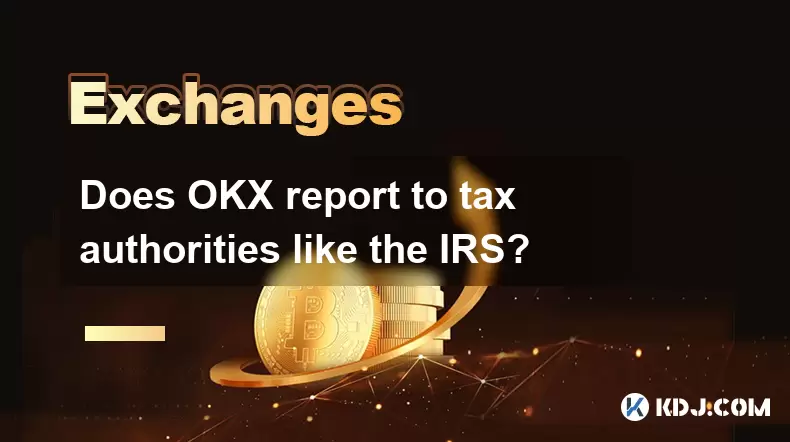
Does OKX report to tax authorities like the IRS?
Jul 03,2025 at 03:14pm
Understanding the Role of Cryptocurrency Exchanges in Tax ReportingCryptocurrency exchanges play a crucial role in facilitating digital asset transactions, but their responsibilities extend beyond trading and custody. As regulatory scrutiny intensifies globally, users are increasingly concerned about whether platforms like OKX report to tax authorities ...

How to get API keys from OKX for trading bots?
Jul 03,2025 at 07:07am
Understanding API Keys on OKXTo interact with the OKX exchange programmatically, especially for building or running trading bots, you need to obtain an API key. An API (Application Programming Interface) key acts as a secure token that allows your bot to communicate with the exchange's servers. On OKX, these keys come with customizable permissions such ...

What is OKX Signal Bot?
Jul 02,2025 at 11:01pm
Understanding the Basics of OKX Signal BotThe OKX Signal Bot is a feature within the OKX ecosystem that provides users with automated trading signals and execution capabilities. Designed for both novice and experienced traders, this bot helps identify potential trading opportunities by analyzing market trends, technical indicators, and historical data. ...

Is OKX a good exchange for beginners?
Jul 03,2025 at 05:00pm
What Is OKX and Why Is It Popular?OKX is one of the leading cryptocurrency exchanges globally, known for its robust trading infrastructure and a wide variety of digital assets available for trading. It supports over 300 cryptocurrencies, including major ones like Bitcoin (BTC), Ethereum (ETH), and Solana (SOL). The platform has gained popularity not onl...

Can I use a credit card to buy crypto on OKX?
Jul 04,2025 at 04:28am
Understanding OKX and Credit Card PaymentsOKX is one of the leading cryptocurrency exchanges globally, offering a wide range of services including spot trading, derivatives, staking, and more. Users often wonder whether they can use a credit card to buy crypto on OKX, especially if they are new to the platform or looking for quick ways to enter the mark...

How to check the status of OKX services?
Jul 02,2025 at 11:14pm
What is OKX, and Why Checking Service Status Matters?OKX is one of the world’s leading cryptocurrency exchanges, offering services such as spot trading, futures trading, staking, and more. With millions of users relying on its platform for daily transactions, it's crucial to know how to check the status of OKX services. Downtime or maintenance can affec...

Does OKX report to tax authorities like the IRS?
Jul 03,2025 at 03:14pm
Understanding the Role of Cryptocurrency Exchanges in Tax ReportingCryptocurrency exchanges play a crucial role in facilitating digital asset transactions, but their responsibilities extend beyond trading and custody. As regulatory scrutiny intensifies globally, users are increasingly concerned about whether platforms like OKX report to tax authorities ...
See all articles

























































































